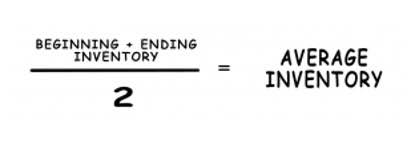
By visually separating different accounts, T-accounts help businesses and auditors understand financial https://ravibrar.com/7-best-payroll-software-platforms-for-construction/ flows at a glance. After all, when combined with accounting software, T-accounts provide continuous and precise support that ensures clear and effective financial management. They make it easy to visualize how transactions affect accounts, which is especially helpful for beginners learning double-entry bookkeeping. T-accounts are quick to set up, requiring just a pen and paper or a simple spreadsheet. Each type follows the same T-Account structure but serves a unique role in tracking financial activity. For example, a cash T-account tracks money inflows and outflows, while a revenue T-account monitors income from sales.
Liabilities

Transactions are then recorded on the left (debit) or right (credit) side of the T, reflecting increases or decreases in that element. This visual representation helps them ensure their records’ accuracy and easily prepare financial statements. Accrual accounting requires meticulous tracking of accounts receivable, accounts payable, and accrued expenses, which may not be effectively captured in T-accounts. Consequently, businesses employing accrual accounting methods may find T-accounts insufficient for accurately reflecting their financial position and performance. T-accounts help with understanding how transactions flow, but ledgers are the official books used in accounting reports.
- Debits and credits are terms used by bookkeepers and accountants when recording transactions in the accounting records.
- The balance sheet summarizes the financial position of the company at the end of a specific period, usually at the end of the fiscal year.
- Service Revenues include work completed whether or not it was billed.
- This process builds trust with stakeholders and supports compliance with regulations like the Sarbanes-Oxley Act, which mandates robust internal controls.
- Well organized T accounts are the first step in the bookkeeping and accounting process.
- They act as a bridge between theoretical accounting concepts and practical applications.
- (Revenue accounts are increased with credits.) You’ve got 100 dollars on the left and 100 dollars on the right in your two T accounts, so they’re in balance.
Equity
- Without proper management of cash flow, a business simply cannot survive.
- This general ledger contains the full list of every transaction that occurs in your business.
- If the customer purchased on credit, a sales allowance will involve a debit to Sales Allowances and a credit to Accounts Receivable.
- For instance, a company hires some extra temporary labor for a busy period in their factory.
- On the other hand, for the “Cash” T-account, since cash is decreasing, we put $50 on the right side (credit).
The permanent accounts are all of the balance sheet accounts (asset accounts, liability accounts, owner’s equity accounts) except for the owner’s drawing account. An account with a balance that is the opposite of the normal balance. For example, Accumulated Depreciation is a contra asset account, because its credit balance is contra Insurance Accounting to the debit balance for an asset account. This is an owner’s equity account and as such you would expect a credit balance. Other examples include (1) the allowance for doubtful accounts, (2) discount on bonds payable, (3) sales returns and allowances, and (4) sales discounts.
Revenues and Gains Are Usually Credited

Most companies rely heavily on the profit and loss report and review it regularly to enable strategic decision making. The Equity section of the balance sheet typically shows the value of any outstanding shares that have been issued by the company as well as its earnings. All Income and expense accounts are summarized in the Equity Section in one line on the balance sheet called Retained Earnings. This account, in general, reflects the cumulative profit (retained earnings) or loss (retained deficit) of the company. A current liability account that reports the amounts owed to employees for hours worked but not yet paid as of the date of the balance sheet. A contra revenue account that reports the discounts allowed by the seller if the customer pays the amount owed within a specified time period.
TRANSACTIONS ARE CATEGORIZED INCORRECTLY
Because cash is an asset account, the Cash account will be debited for $20,000. In double-entry bookkeeping, every transaction affects two accounts at the same time (hence the word double). One of these accounts is always debited, while the other always credited. A T-Account is a financial tool used to record and track account transactions in a simplified and organized manner.

Attributes of accounting elements per real, personal, and nominal accounts
- This entry balances the accounting T-account equation by increasing assets and revenues.
- Then, the journal entry is moved into the ledger, in the form of a T account.
- T-accounts help keep the books balanced by showing all payables and payments clearly.
- As shown, the cash account is debited because the company received cash, while the sales revenue account is credited to record the income generated from the sale.
- Drag and drop transactions, visualize account balances dynamically, and even link them to your general ledger.
- The debits and credits are separated by the vertical line of the T.
- After transactions are initially recorded in a journal, the information is then “posted” to individual T-accounts within a general ledger.
A T-account is a financial record of an account’s transactions, shaped like the letter “T.” The account name goes at the top, with debits on the left and credits on the right. It follows the principles of double-entry bookkeeping, where every t account definition transaction affects two accounts to maintain the accounting equation in balance. T-Accounts are a visual representation of a general ledger account, named for their ‘T’ shape.

Each T represents a separate account in your books or accounting software. Let’s look at some more typical examples of how T accounts help you determine how to record a transaction, particularly when more than two accounts are involved. For purposes of these transactions, let’s assume you’re using accounting software and not writing down each transaction in a traditional ledger book.

Now Let’s Define Ledger
Maintaining accurate records is crucial for compliance with accounting standards like Generally Accepted Accounting Principles (GAAP) or International Financial Reporting Standards (IFRS). For example, under GAAP, revenue recognition principles dictate when to record revenue, influencing how transactions are documented. A complete record of all financial transactions made by a company, containing all individual accounts. All the increases in the business expenses are recorded on the debit (left) side and the decreases on the credit (right) side.
Since different accounts will have multiple journal entries and transactions, several numbers will show in the debit column and credit columns. Sometimes you will see debit and credit labeled as dr and cr respectively. Expense T accounts document costs incurred to generate revenue, such as cost of goods sold (COGS), salaries, and rent.

